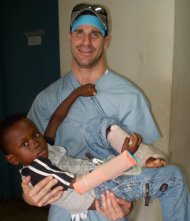
Ten days after the earthquake shook Haiti I was offered a once-in-a-lifetime opportunity to join a shock and trauma team that had access into Haiti through indigenous and wealthy benefactors. The team consisted of three orthopedic surgeons, an ER doctor, a pediatrician, and several nurses. We worked under the auspices of a respected Haitian surgeon who is one of the pillars of the Leogane society. Though this was not a Christian team, I was offered a role as “chaplain” because of my knowledge of the French language and the need for translation service. A “door of utterance” was opened for me to minister to both Haitians and Americans in the city of Leogane, one of the most dramatically affected cities near the epicenter of the January 12 quake. Over the next few weeks I will share with SI readers snippets from my journal containing my observations and opinions about the situation in Haiti.
Day One (January 22)
Entering into Haiti was a surreal experience. Our forty-five-minute charter flight from the Dominican Republic was extended to about two hours because the Port-au-Prince airport that normally handles about nine flights a day (so I am told) is now trying to handle two hundred flights a day. It was deep into the night when we approached. No one spoke; everyone was lost in thought as we gazed out the window of our twin engine plane. Looking down on the city of a couple million souls, one could see very few lights. A black hole of suffering, I thought. And that was before we got here.


Discussion